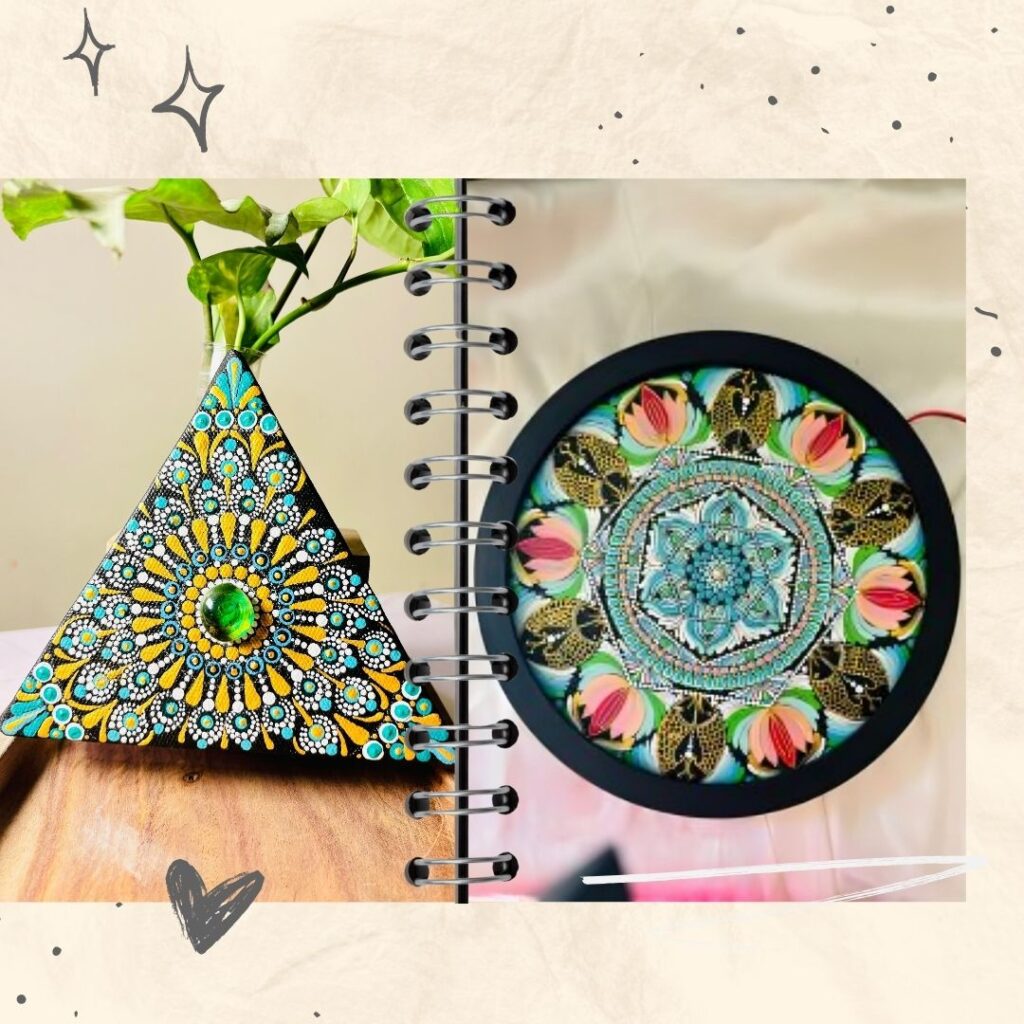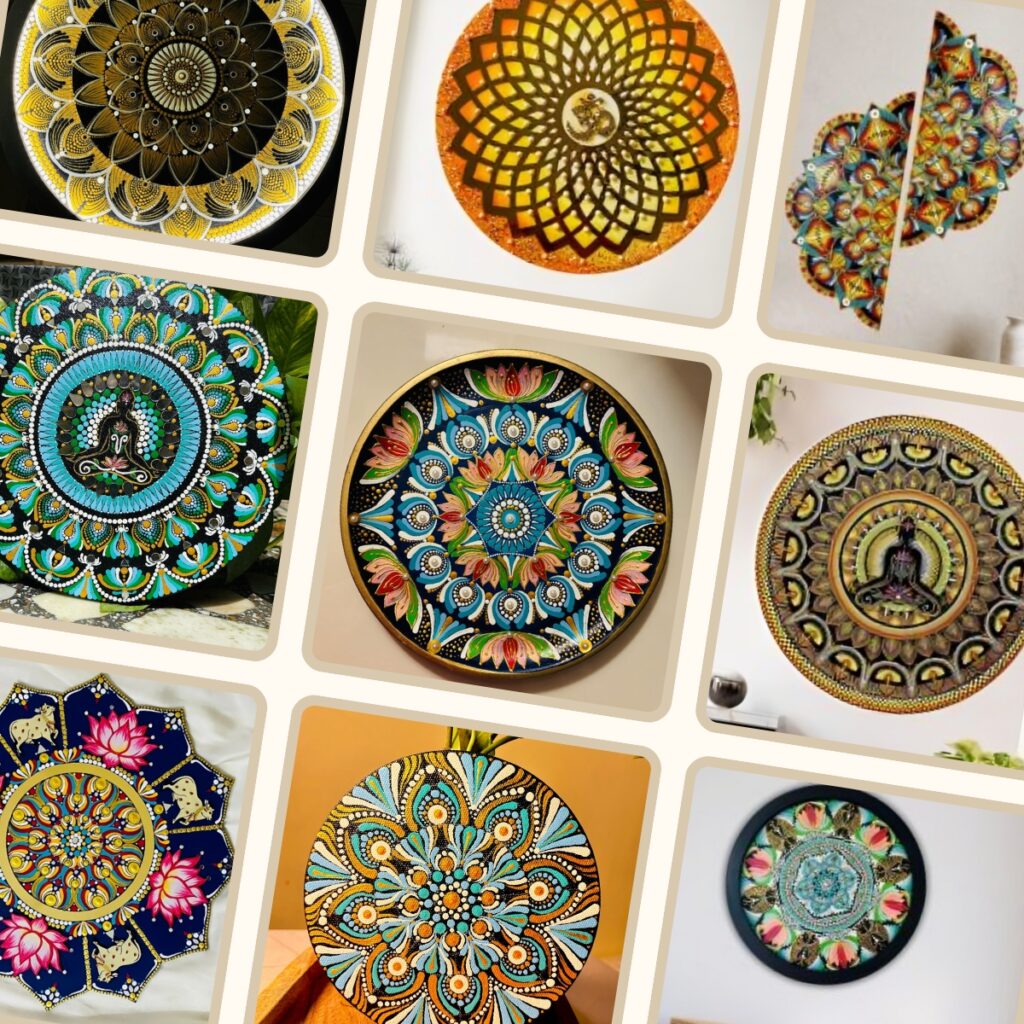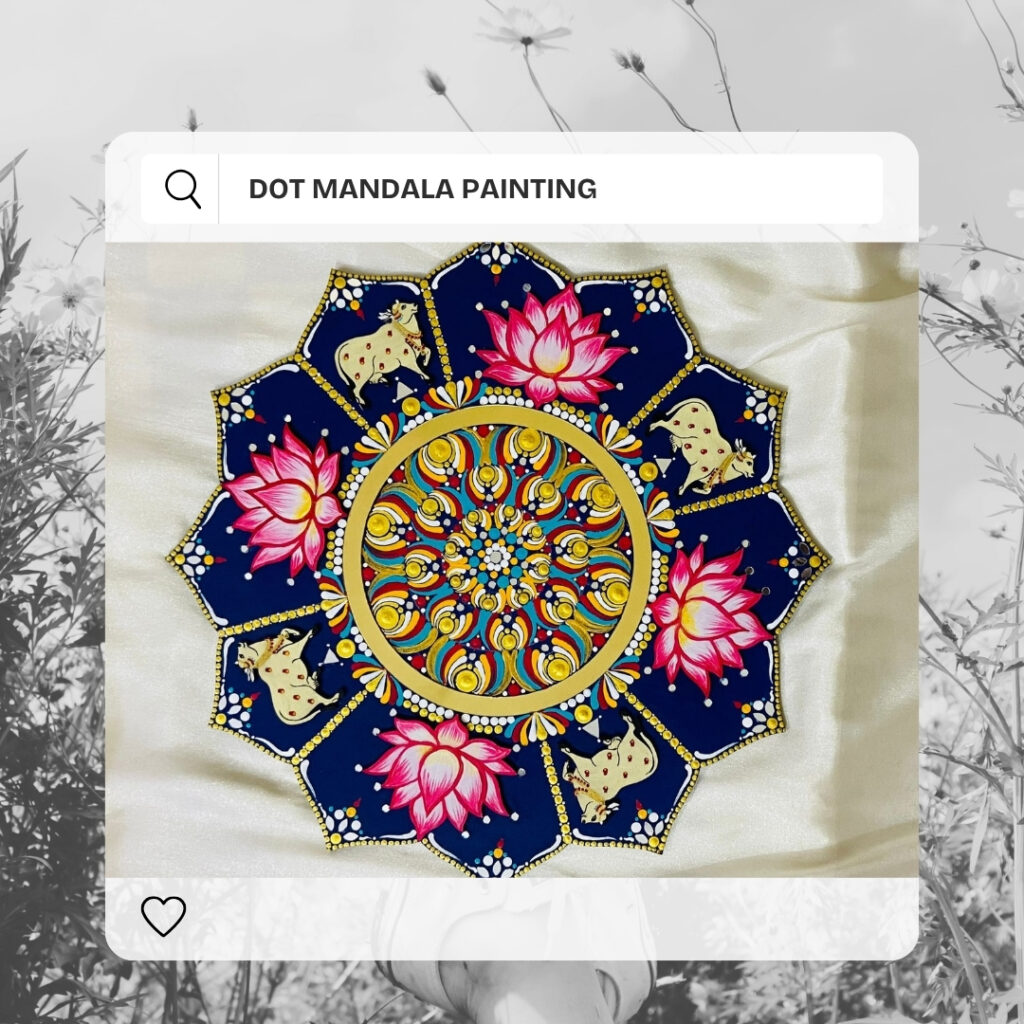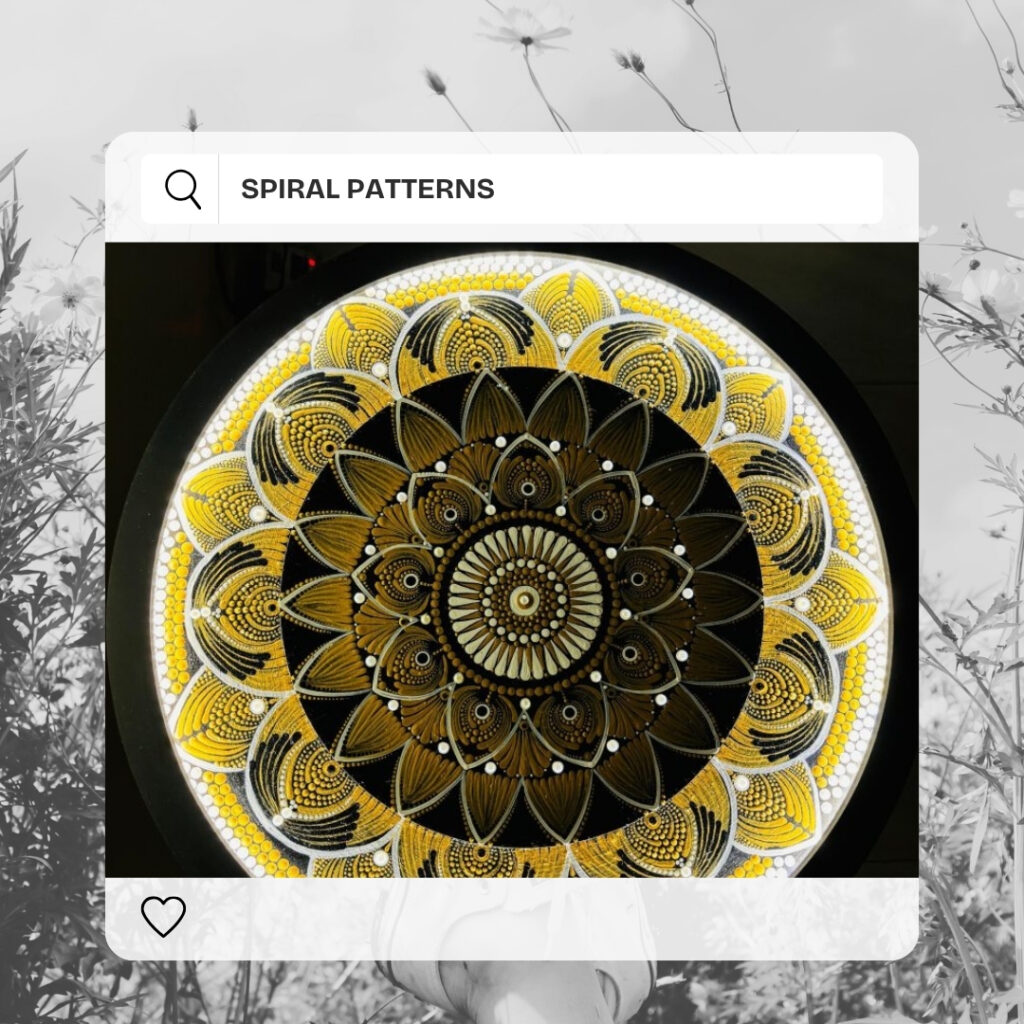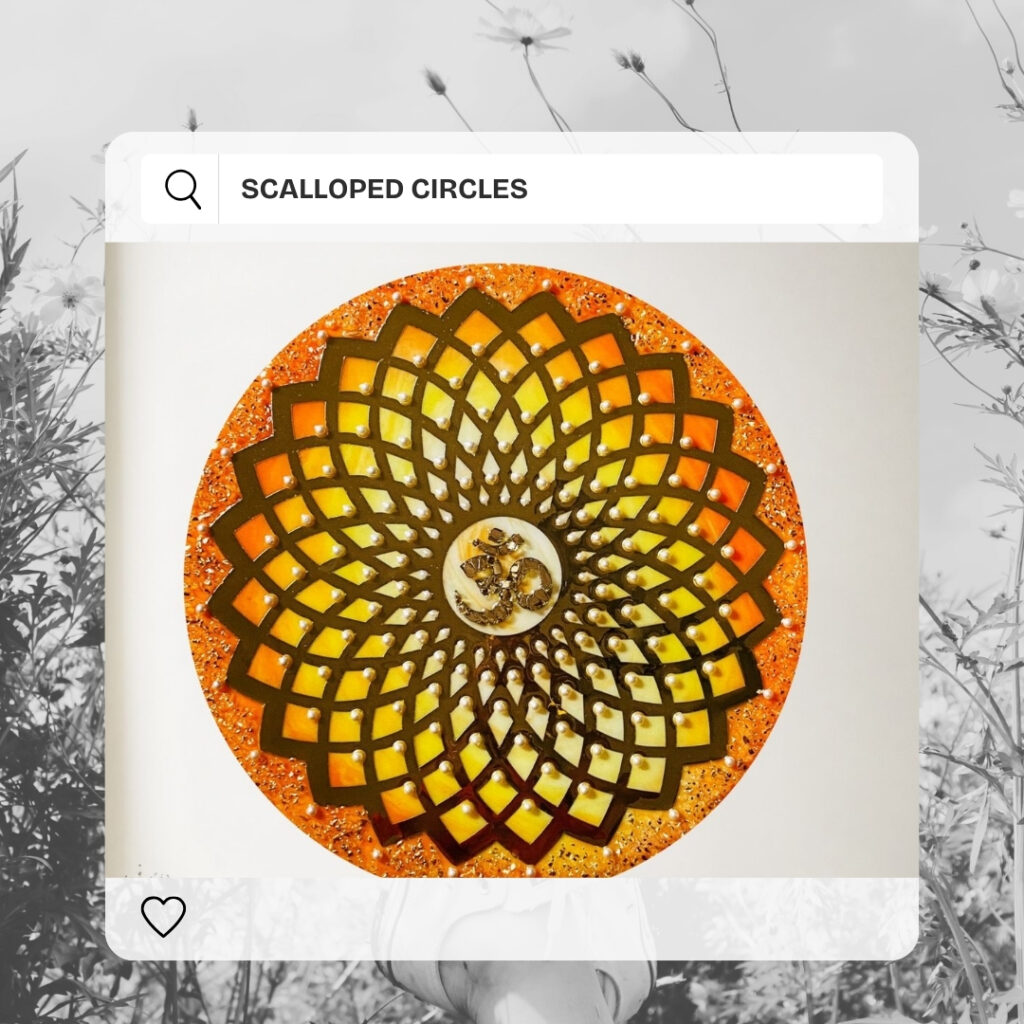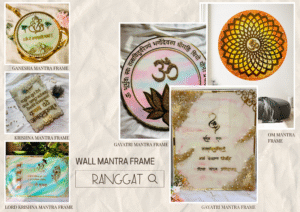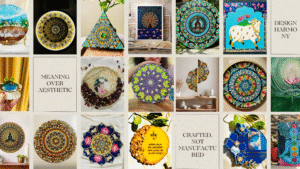A single dot can express a lot of information in a world full of chaos and noise. In Dot Mandala Art, this is particularly true, as each dot represents a moment rather than merely a mark. In Mandala art, minimalism’s strength resides in its capacity to convey deep meaning with the least amount of material. It’s not just about what is seen but what is felt in the silence between the dots.
What is Dot Mandala Art?
A form of mandala design known as “dot mandala art” is made using tiny, purposefully placed dots grouped in circular or geometric shapes. This art form, which draws inspiration from ancient spiritual symbols, particularly in Hindu and Buddhist cultures, captures the sacred power of patience, mindfulness, and symmetry.
Traditional mandalas may consist of a lot of detailed patterns, while dot mandalas tend to be more minimalistic, using simplicity, repetition, and spacing to create complex shapes.
Why Minimalism Matters in Mandala Art
1. Each Dot Holds Intention
Every dot in a dot mandala is positioned with conscious energy, in contrast to brushstrokes. Because the rhythm of the dots turns into a form of meditation, minimalism becomes a means of achieving mindfulness rather than a restriction.
2. Silence Speaks Through Space
In a minimalist mandala, the space between the dots is not empty; rather, it is balanced and full of meaning. The pauses between notes create rhythm, just like in music. Space adds clarity to mandala painting.
3. Sacred Geometry in Simplicity
The sacred geometry of mandala designs radiates harmony and structure even when components are few. One dot in the middle may represent the soul, the universe, or the beginning of existence.
4. Minimalism Enhances Emotional Healing
Minimalist patterns help calm the mind and reduce anxiety. Through simplicity, it gives the artist and viewer a chance to relax, think, and recover.
5. Timeless Aesthetic Appeal
These minimalist dot mandalas are ideal for modern homes, galleries, and meditation areas since they combine elements of old art with current design sensibility. Their elegance lies in their restraint
The Spiritual Symbolism of a Single Dot
According to Eastern philosophy, the point of creation, or the beginning of all things, is symbolized by a single dot, also called the bindu. It is the seed from which the universe blooms. The focal point of a mandala serves as a reminder of unity and tranquility, anchoring the entire design.
Dot Mandala in Modern Mindfulness Practices
More and more people are using Dot Mandala painting as a form of therapy. The combination of simplistic designs and the repetitive motion of dotting supports
- Stress reduction
- Focused attention
- Emotional release
- A sense of inner peace
Modern workshops and art therapists use simple mandalas to encourage healing and self-expression in adults and children.
Minimalism in mandala art isn’t about doing less—it’s about feeling more. The power of a single dot can be greater than a thousand strokes. In the quiet discipline of dot art, there is a sacred combination of presence, patience, and purpose.

